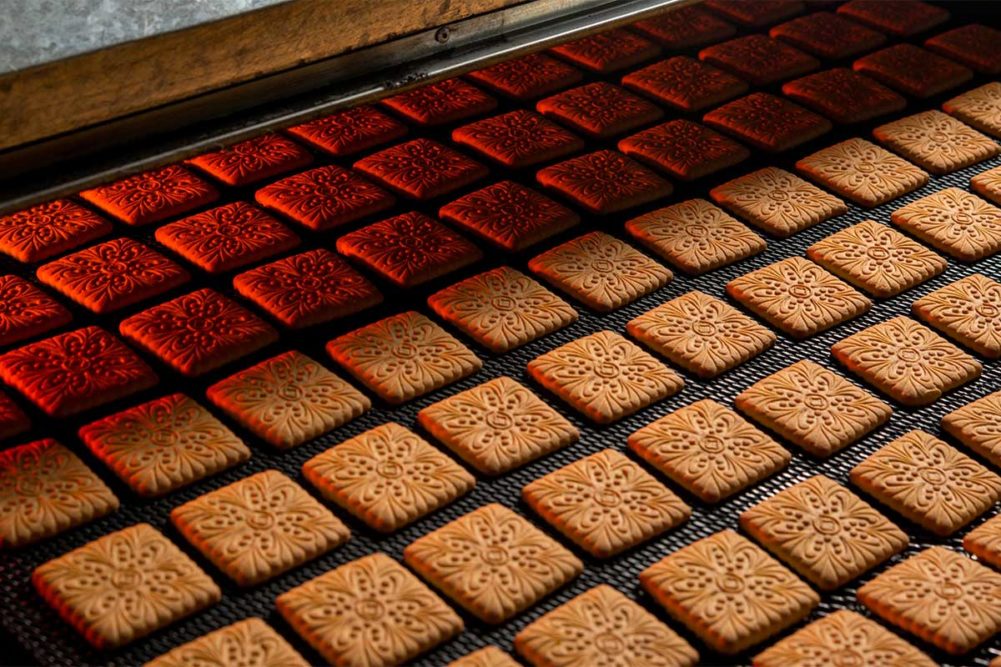Today’s cookies range from better-for-you and protein-packed to decadent and filled with indulgent inclusions. While there are plenty of trending options for bakers to win over consumers, producing these treats can be a conundrum as cookie manufacturers grapple with workforce shortages, hard-to-handle ingredients, sanitation requirements and more.
Advances in processing technology, however, allow bakers to reduce their labor dependency and enhance capacity while achieving consistently high-quality cookies.
A limited workforce coupled with strong demand has many producers turning to automation and new technologies to keep the cookie creation going strong.
“Automation, PLCs, recipes and servo motors are all key steps cookie manufacturers are taking to reduce labor and produce more consistent product,” said Sam Pallottini, director of biscuit, cookie, pet food sales, Reading Bakery Systems (RBS).
Servo wirecuts, for example, eliminate components such as bearings and increase flexibility for cookie makers while decreasing difficulty for operators.
“The operator now can adjust the stroke length, wire height and drop it through the HMI without stopping the machine,” he explained. “They can then save the recipe for later use.”
Mr. Pallottini added that the growing adoption of 3D printing has been a valuable tool in developing new die cups and, in turn, new cookie types.
“This technology has allowed us to create better streamlined die cups to create single-dough cookies, co-extruded, two-dough cookies, encapsulated and bar products,” he said. “We are no longer constrained by machining limitations, and the 3D components are often manufactured quicker than a typical machine can produce.”
Many gourmet cookie makers using larger particulates have found automation to be a challenge without damaging the product, noted John Giacoio, vice president of sales, Rheon USA, but advancements in extrusion technology have allowed even these bakers to automate their production. This trend especially took off during the COVID-19 pandemic.
“Manufacturers that were hand scooping these decadent cookies were experiencing increased e-commerce volume from people sitting at home, but they were unable to hire workers to deal with the increased volume,” he explained. “Our co-extruders were the solution for accurate portioning while maintaining quality.”
Mr. Giacoio added that Rheon offers automatic cookie panning as well as larger systems that can feed tunnel ovens at speeds of up to 120 cookies per minute.
Depositor attachments also allow cookie producers to expand production by running multiple rows of product.
“In the past, it’s often been one exit point, but we developed a system for dividing into multiple rows to give you more capacity,” said Ken Hagedorn, vice president, bakery sector, Handtmann. “The attachments on the machine have become more applicable to producing more rows across types of cookies.”
At the oven, cookie makers today can boost production while reducing energy use and operator difficulty.
Baker Perkins’ new TruBake HiCirc convection oven, for example, uses a high-rate direct convection heating, said Mark Glover, product manager for baked products and food extrusion, while airflow above and below the band ensures an even bake and moisture retention.
“Not having a heat exchanger results in a much faster temperature response time and a 40:1 turndown range,” he explained. “As well as delivering a high heat flux to bake a full range of products, this results in significant savings in both fuel and maintenance costs.”
The adoption of HMI panels also simplifies the baking process, allowing producers to easily control factors like airflow, heat and exhaust and saving these settings as a recipe, Mr. Pallottini noted.
“This enables customers to develop their baking curves quickly and more efficiently,” he said.
This article is an excerpt from the April 2023 issue of Baking & Snack. To read the entire feature on Cookie Processing, click here.






